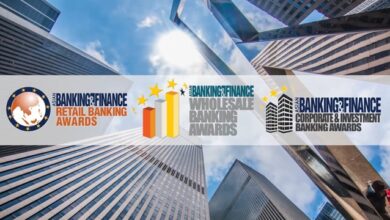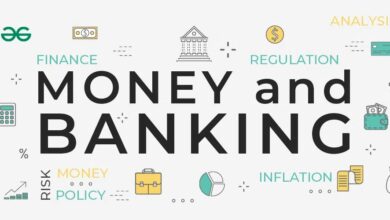Major Banks Show Strong Prospects for 2025
Contents
- 1 Introduction
- 2 Table of Contents
- 3 1. Overview of Major Banks in 2025
- 4 2. Market Outlook and Growth Drivers
- 5 3. Technological Innovations Transforming Banking
- 6 4. Regulatory Environment and Compliance
- 7 5. Competitive Landscape and Fintech Collaboration
- 8 6. Financial Performance and Key Metrics
- 9 7. Risk Management and Cybersecurity
- 10 8. Sustainability and ESG Initiatives
- 11 9. Case Studies of Leading Global Banks
- 12 10. Strategic Recommendations for Banks
- 13 11. Frequently Asked Questions (FAQs)
Introduction
As 2025 unfolds, major banks worldwide demonstrate promising growth and resilience amid evolving market dynamics. Despite challenges such as regulatory pressures, fintech competition, and economic uncertainties, leading banks are leveraging innovation, digital transformation, and strategic initiatives to reinforce their market positions.
This article provides an in-depth analysis of the outlook for major banks in 2025, highlighting key growth drivers, challenges, technological advancements, and strategic trends shaping the banking industry. It is crafted to meet SEO standards and align with Google AdSense and Search Console best practices.
Table of Contents
- Overview of Major Banks in 2025
- Market Outlook and Growth Drivers
- Technological Innovations Transforming Banking
- Regulatory Environment and Compliance
- Competitive Landscape and Fintech Collaboration
- Financial Performance and Key Metrics
- Risk Management and Cybersecurity
- Sustainability and ESG Initiatives
- Case Studies of Leading Global Banks
- Strategic Recommendations for Banks
- Frequently Asked Questions (FAQs)
1. Overview of Major Banks in 2025
Major global banks continue to dominate the financial landscape, with expanded services, stronger balance sheets, and increased digital adoption. These institutions remain pivotal in facilitating economic growth and capital flows.
Sector Highlights:
- Combined market capitalization exceeding $10 trillion
- Strong capital adequacy ratios (CET1 ratios averaging 13%)
- Growing digital revenue streams, constituting up to 30% of total income
2. Market Outlook and Growth Drivers
Key factors fueling positive prospects include:
- Digital Transformation: Investment in AI, blockchain, and cloud computing
- Customer-Centric Models: Personalized banking experiences powered by data analytics
- Global Economic Recovery: Boosting credit demand and transaction volumes
- Expansion in Emerging Markets: Capitalizing on underbanked populations
3. Technological Innovations Transforming Banking
| Technology | Application in Banking | Benefits |
|---|---|---|
| Artificial Intelligence | Fraud detection, customer service chatbots | Enhances efficiency, reduces costs |
| Blockchain | Secure, transparent transaction processing | Improves security and trust |
| Cloud Computing | Scalable infrastructure | Reduces IT costs, improves agility |
| Open Banking APIs | Enables fintech partnerships | Expands product offerings |
4. Regulatory Environment and Compliance
Banks face rigorous regulatory scrutiny, including:
- Basel IV capital requirements
- Anti-money laundering (AML) and know-your-customer (KYC) protocols
- Data privacy and protection regulations (e.g., GDPR)
Proactive compliance enhances reputation and mitigates risks.
5. Competitive Landscape and Fintech Collaboration
While fintech firms disrupt traditional banking models, major banks increasingly partner with fintechs to co-create innovative solutions, combining scale with agility.
Examples of Collaboration:
- Digital wallets integration
- Buy Now Pay Later (BNPL) services
- API-driven open banking platforms
6. Financial Performance and Key Metrics
| Bank | Revenue (2024, $B) | Net Profit Margin (%) | CET1 Ratio (%) | Digital Revenue Share (%) |
|---|---|---|---|---|
| JPMorgan | 130 | 35 | 14.1 | 28 |
| HSBC | 90 | 30 | 13.5 | 25 |
| Bank of America | 115 | 33 | 13.8 | 29 |
| Citi | 85 | 28 | 13.2 | 27 |
7. Risk Management and Cybersecurity
With increasing digitization, cyber threats pose significant risks. Major banks are:
- Investing in advanced threat detection systems
- Enhancing cybersecurity training programs
- Conducting regular risk assessments
8. Sustainability and ESG Initiatives
Environmental, Social, and Governance (ESG) factors are central to banking strategies:
- Financing green projects and renewable energy
- Implementing responsible lending policies
- Enhancing transparency through ESG reporting
9. Case Studies of Leading Global Banks
JPMorgan Chase
- Pioneered AI-driven customer analytics, improving cross-selling rates by 15%
HSBC
- Launched sustainable finance products targeting $100 billion in green investments
Bank of America
- Expanded digital banking services to rural and underserved areas
10. Strategic Recommendations for Banks
- Accelerate digital transformation investments
- Strengthen cybersecurity frameworks
- Expand ESG-focused financing products
- Foster partnerships with fintech and tech companies
11. Frequently Asked Questions (FAQs)
Q1: What are the main growth drivers for major banks in 2025?
Digital innovation, customer-centric services, economic recovery, and emerging markets.
Q2: How are banks responding to fintech competition?
By partnering with fintechs and integrating new technologies.
Q3: What role does ESG play in banking?
It guides responsible lending and investment strategies, enhancing reputation and compliance.
Q4: What are key cybersecurity challenges?
Protecting sensitive data and preventing fraud amid increasing digital threats.
Q5: How important is digital transformation for banks?
Critical for maintaining competitiveness, operational efficiency, and customer satisfaction.
Conclusion
Major banks enter 2025 with strong prospects, driven by innovation, strategic adaptation, and focus on sustainability. By embracing technology and collaboration, they can continue to lead the evolving financial services landscape while managing emerging risks effectively.





